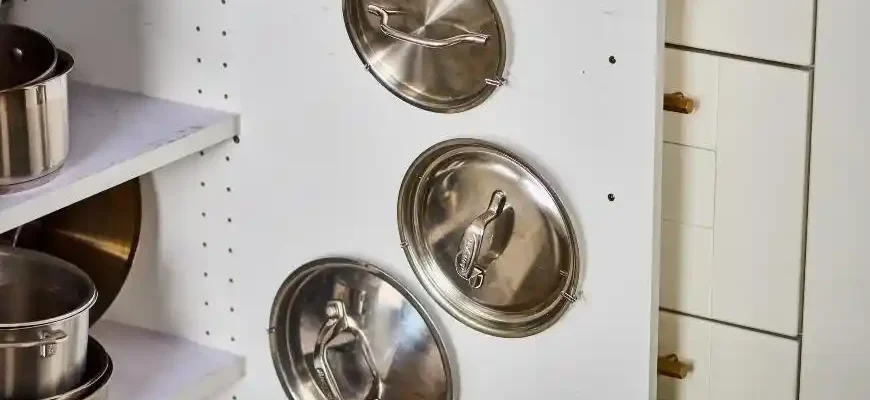Organizing a kitchen isn’t just about making it look neat—it’s about creating an environment that maximizes both function and enjoyment. Whether you’re a seasoned home cook, someone who’s just beginning their culinary journey, or someone who spends the bulk of their time managing a busy household, an organized kitchen can make all the difference. This isn’t just a matter of aesthetics; it’s a matter of efficiency, safety, and even well-being.
Here’s a thorough and all-encompassing guide to organizing your kitchen, based on decades of experience, research, and solid practical advice.
1. Start with the Basics: What Do You Really Need?
A lot of kitchen organization advice focuses on the “wow” factor—how pretty it looks on Instagram, or how it feels like a Pinterest dream. But before you go wild with decorative storage bins and color-coordinated spice racks, ask yourself one simple question: What do I actually use in my kitchen?
According to a 2020 study published in the International Journal of Consumer Studies, 55% of people tend to overbuy kitchen gadgets and appliances they rarely use, simply because they were influenced by advertisements or trends. The key to good kitchen organization starts with purging unnecessary items. Here’s how to begin:
- Purge the clutter: Go through your drawers, cabinets, and countertops. Donate or toss anything that doesn’t serve a clear purpose. Yes, those ice cream makers, yogurt machines, and bread makers that have been gathering dust for years need to go.
- Declutter your countertops: Keep only essential items on the counter like a coffee maker, knife block, and perhaps a fruit bowl. The more clear space you have, the less stress you’ll feel when preparing meals.
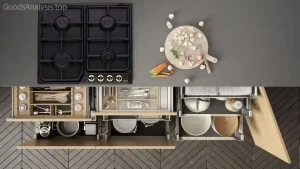
Tip: A common pitfall? Holding on to items “just in case” you need them. If you haven’t used an item in the past year, you probably don’t need it. Trust your instincts.
2. The Importance of a Well-Defined Zone Layout
A kitchen that’s organized into “zones” is one that works efficiently. The goal is to keep everything in a logical place, based on its purpose. According to a study from the American Culinary Federation, the layout of your kitchen can reduce prep time by up to 25%—which means more time enjoying the meal you’ve prepared.
Here are some essential zones for kitchen organization:
- Cooking Zone: This should be around the stove, oven, and microwave. Your pots, pans, cooking utensils, and essential spices should be within easy reach.
- Prep Zone: Often, this is your counter space. Keep cutting boards, knives, mixing bowls, and measuring cups here. Bonus points if you have a designated drawer for prep tools.
- Cleaning Zone: The area near your sink should house dish soap, scrubbers, drying racks, and cleaning supplies. A pull-out trash can is an excellent idea to keep this area clean and out of sight.
- Storage Zone: This is your pantry and refrigerator. Organize dry goods, canned items, and other essentials in an easily accessible way. Consider clear containers for items like pasta and rice to reduce waste and ensure you always know when you’re running low.
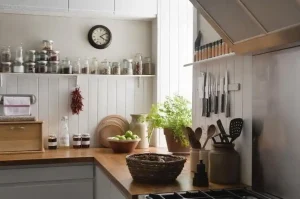
Tip: Keep the “Golden Triangle” rule in mind when organizing: your stove, sink, and refrigerator should be close to one another. This minimizes the back-and-forth movement while you cook.
3. Maximizing Vertical Space and Storage Solutions
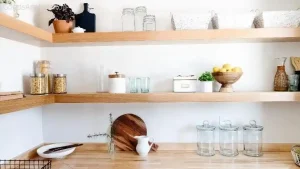
As kitchens get smaller, optimizing vertical space becomes crucial. In fact, a 2018 National Kitchen and Bath Association survey revealed that 63% of people with small kitchens cited “lack of storage” as their biggest organizational challenge. But there are ways to make the most of limited space.
- Use vertical shelves: Wall-mounted shelves for spices, oils, and condiments can free up valuable counter space.
- Install hooks and racks: A rack for pots and pans above your stove can keep them accessible and free up cabinet space. Likewise, hooks under cabinets or on the back of doors can store utensils, towels, and even cleaning supplies.
- Pull-out cabinets: These are perfect for hiding away heavy-duty items like blenders or mixers that you don’t need to access daily.
Tip: Don’t overlook the power of drawer dividers and organizers for utensils. A well-organized drawer can save you a lot of headache when you’re rushing to make dinner.
4. Categorize and Label Everything
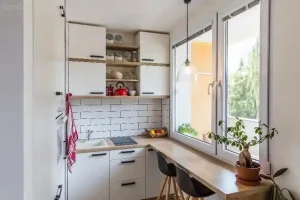
This one might seem simple, but it can be a game-changer: categorize and label. Not only will this keep things easy to find, but it will help everyone in your household know where things go.
- Drawer organizers: Use dividers in your drawers for utensils, tools, and small gadgets.
- Label everything: Whether it’s your pantry, fridge, or spice rack, labeling will save time and prevent the inevitable “where’s the cumin?” moment.
Tip: When labeling, try color coding or using larger, bold letters for easy identification. It’s also useful for children who are old enough to help with meal prep or cleaning up.
5. Healthy and Efficient Cooking: Organizing with Wellness in Mind
Did you know that a cluttered kitchen can actually lead to unhealthy eating habits? A 2019 study published in the Journal of Environmental Psychology found that people with cluttered kitchens were more likely to snack impulsively, as they felt overwhelmed or stressed by their environment.
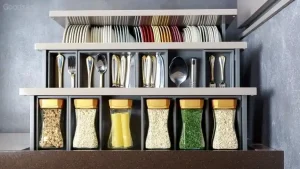
Here are some tips to make your kitchen not only efficient but also conducive to healthy cooking:
- Organize fresh foods: Keep fruits and vegetables visible, preferably in clear bins or on open shelves, so you’re more likely to grab them first.
- Create easy access to cooking essentials: Store healthy ingredients, such as olive oil, nuts, and whole grains, within arm’s reach. The easier they are to grab, the more likely you’ll use them in meals.
- Separate junk food: If you can, store highly processed or sugary foods out of sight (perhaps at the back of a cabinet).
Tip: According to a study from Cornell University, people who keep their kitchens well-organized are 30% more likely to engage in regular meal prep and make healthier choices.
6. Addressing Common Pitfalls and Problems
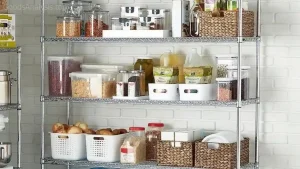
Of course, there’s no such thing as a perfect kitchen. So, let’s talk about a few common organizational mistakes and how to solve them:
- Overcrowding your cabinets: It’s tempting to stuff everything in and slam the door shut, but that just creates chaos. Solution? Regularly assess what you use and need, and store items in sections.
- Lack of a system: Many people organize haphazardly. If you don’t have a logical system, you’ll waste time looking for things. Solution? Implement the “zone” method we talked about earlier. It truly works wonders.
- Too much stuff on the countertop: This is a big one. If your counters are constantly cluttered, it can make the whole kitchen feel chaotic. Solution? Limit countertop items to those you use every day—everything else can be stored away.
Tip: Don’t underestimate the power of a tidy kitchen. A clean, organized space can actually boost your mood and creativity.
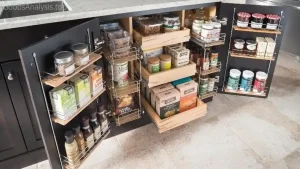
Real-Life Opinions on Kitchen Organization
- Anna, 34, USA: “I used to think a cluttered kitchen was just part of being busy, but after spending a day reorganizing, I realized how much more enjoyable cooking has become. I’m more motivated to cook healthy meals now.”
- John, 56, UK: “I’m not the tidiest person, but I’ve learned that if I organize my kitchen into zones, I’m more likely to stick to it. The one problem I face? My family tends to leave things everywhere—I’m working on getting them on board!”
- Ling, 40, China: “I live in a small apartment, so vertical space is everything. I’ve installed a few shelves above my sink and it made a huge difference in my ability to store things.”
- Carlos, 62, Mexico: “For me, the trick has been labeling. I never used to do it, but now that I do, my kids and grandkids can find what they need without me having to tell them.”
- Amira, 29, Egypt: “I love how organized my kitchen is now, but I also realized that I need to keep a balance. Being overly strict about organization can make it feel like a chore instead of something fun. It’s all about balance!”
Final Thoughts
The key to kitchen organization is not only about creating a tidy space but ensuring it’s functional and tailored to your needs. Keep things simple, focus on zones, and remember that your kitchen should feel like a place of creativity, not stress. Whether you have a spacious kitchen or a tiny corner, good organization will transform your cooking experience.
If you’re still unsure where to start, begin small. Tackle one section at a time and don’t be afraid to adjust things as you go. Happy organizing—and remember, the best kitchens are those that make cooking enjoyable for everyone!

